
|
Astronomy Picture Of the Day (APOD)
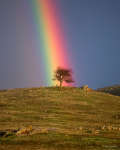 APOD: 2023 March 13 B Rainbow Tree
APOD: 2023 March 13 B Rainbow Tree
12.03.2023
What lies at the end of a rainbow? Something different for everyone. For the photographer taking this picture, for example, one end of the rainbow ended at a tree. Others nearby, though, would likely see the rainbow end somewhere else. The reason is because a rainbow's position depends on the observer.
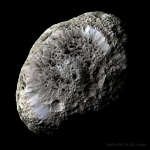 APOD: 2023 March 12 B Saturns Hyperion: A Moon with Odd Craters
APOD: 2023 March 12 B Saturns Hyperion: A Moon with Odd Craters
11.03.2023
What lies at the bottom of Hyperion's strange craters? To help find out, the robot Cassini spacecraft that once orbited Saturn swooped past the sponge-textured moon and took images of unprecedented detail.
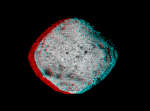 3D Bennu
3D Bennu
10.03.2023
Put on your red/blue glasses and float next to asteroid 101955 Bennu. Shaped like a spinning toy top with boulders littering its rough surface, the tiny Solar System world is about one Empire State Building (less than 500 meters) across.
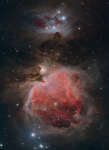 Orion and the Running Man
Orion and the Running Man
9.03.2023
Few cosmic vistas excite the imagination like The Great Nebula in Orion. Visible as a faint celestial smudge to the naked-eye, the nearest large star-forming region sprawls across this sharp telescopic image, recorded on a cold January night in dark skies from West Virginia, planet Earth.
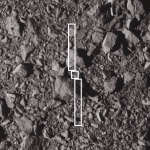 DART vs Dimorphos
DART vs Dimorphos
8.03.2023
On the first planetary defense test mission from planet Earth, the DART spacecraft captured this close-up on 26 September 2022, three seconds before slamming into the surface of asteroid moonlet Dimorphos. The spacecraft's outline with two long solar panels is traced at its projected point of impact between two boulders.
 APOD: 2023 March 8 B Artificial Night Sky Brightness
APOD: 2023 March 8 B Artificial Night Sky Brightness
7.03.2023
Where have all the dim stars gone? From many places on the Earth including major cities, the night sky has been reduced from a fascinating display of thousands of stars to a diffuse glow through which only a few stars are visible.
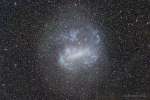 APOD: 2023 March 7 B Deep Field: The Large Magellanic Cloud
APOD: 2023 March 7 B Deep Field: The Large Magellanic Cloud
6.03.2023
Is this a spiral galaxy? No. Actually, it is the Large Magellanic Cloud (LMC), the largest satellite galaxy of our own Milky Way Galaxy. The LMC is classified as a dwarf irregular galaxy because of its normally chaotic appearance. In this deep and wide exposure, however, the full extent of the LMC becomes visible.
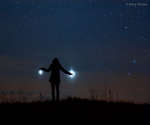 APOD: 2023 March 6 B Jupiter and Venus from Earth
APOD: 2023 March 6 B Jupiter and Venus from Earth
5.03.2023
It was visible around the world. The sunset conjunction of Jupiter and Venus in 2012 was visible almost no matter where you lived on Earth. Anyone on the planet with a clear western horizon at sunset could see them.
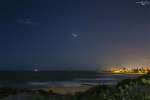 APOD: 2023 March 5 B Jupiter and Venus over Italy
APOD: 2023 March 5 B Jupiter and Venus over Italy
4.03.2023
What are those two bright spots? Planets. A few days ago, the two brightest planets in the night sky passed within a single degree of each other in what is termed a conjunction. Visible just after sunset in much of the world, the two bright spots were Jupiter (left) and Venus (right).
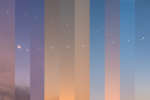 10 Days of Venus and Jupiter
10 Days of Venus and Jupiter
3.03.2023
Venus and Jupiter may have caught your attention lately. The impending close conjunction of the two brightest planets visible in clear evening skies has been hard to miss. With Jupiter at the top, starting...
|
January February March April May |
|||||||||||||||||||||||||||||||||||||||||||||||||